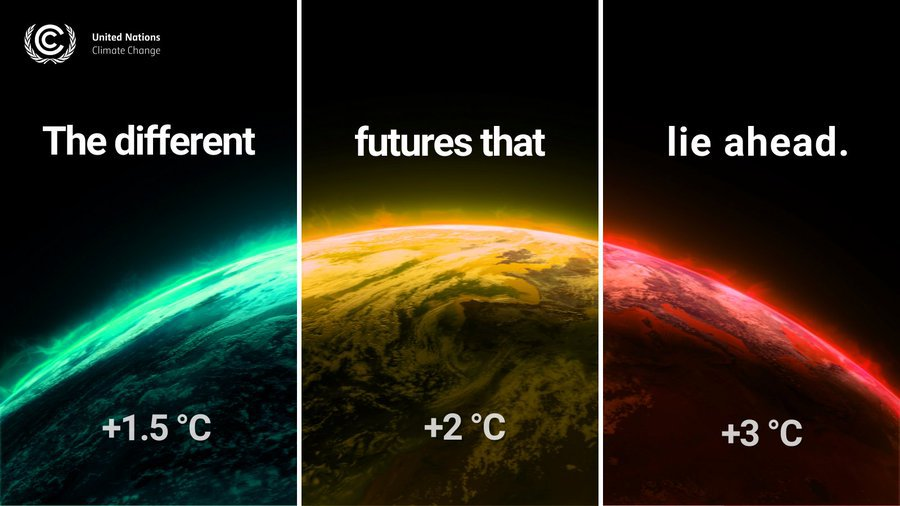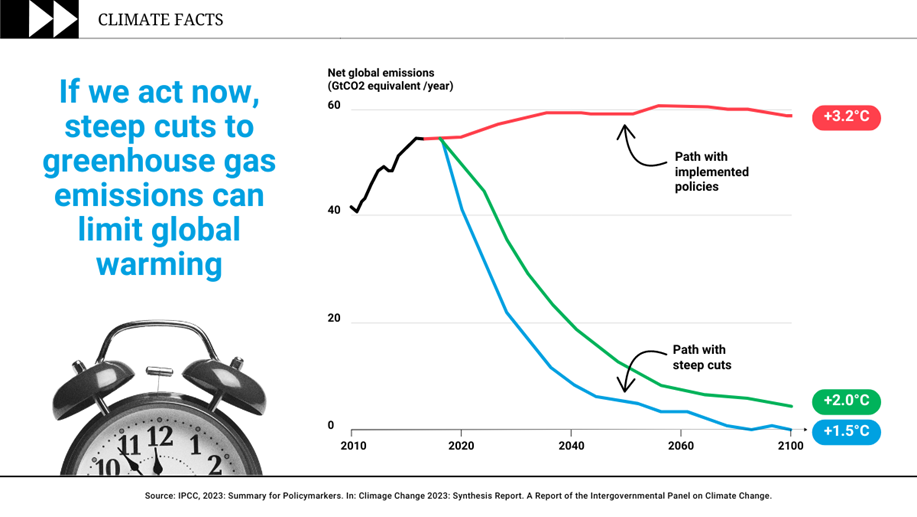- Courses
- GS Full Course 1 Year
- GS Full Course 2 Year
- GS Full Course 3 Year
- GS Full Course Till Selection
- Answer Alpha: Mains 2025 Mentorship
- MEP (Mains Enrichment Programme) Data, Facts
- Essay Target – 150+ Marks
- Online Program
- GS Recorded Course
- Polity
- Geography
- Economy
- Ancient, Medieval and Art & Culture AMAC
- Modern India, Post Independence & World History
- Environment
- Governance
- Science & Technology
- International Relations and Internal Security
- Disaster Management
- Ethics
- NCERT Current Affairs
- Indian Society and Social Issue
- NCERT- Science and Technology
- NCERT - Geography
- NCERT - Ancient History
- NCERT- World History
- NCERT Modern History
- CSAT
- 5 LAYERED ARJUNA Mentorship
- Public Administration Optional
- ABOUT US
- OUR TOPPERS
- TEST SERIES
- FREE STUDY MATERIAL
- VIDEOS
- CONTACT US
1.5 degrees Celsius target will be ‘gone’ in a few years: UN report
1.5 degrees Celsius target will be ‘gone’ in a few years: UN report
28-10-2024
- In October 2024, The Emissions Gap Report, an annual publication of the UN Environment Programme, warned that the Paris Agreement objective of keeping global rise in temperatures to within 1.5 degree Celsius would be “gone within a few years”.
- A UN report reveals trends in global greenhouse gas emissions, particularly from major emitters like China and India.
Emission Increases:
- China: Greenhouse gas emissions grew by 5.2% in 2023.
- India: Emissions increased by 6.1% in the same year.
- Global Emissions: Overall emissions in 2023 were 1.3% higher than in 2022.
The Emissions Gap Report:
The Emissions Gap Report is an annual publication by the UN Environment Programme, released ahead of climate change conferences.
Key highlights include:
- Paris Agreement Target: The report states that the goal of keeping temperature rise within 1.5 degrees Celsius could be "gone within a few years."
- The 2 degrees Celsius is also at risk unless countries drastically enhance their climate actions.
- Current Climate Actions: The most optimistic scenario suggests that global greenhouse gas emissions could be reduced by only 10% by 2030 from 2019 levels, while a 42% reduction is necessary to keep the 1.5-degree target in sight.
- The required reductions must escalate to 57% by 2035.
- Updated Climate Plans: Countries are urged to submit significantly stronger climate action plans by next year, as current commitments are insufficient.
Urgent Action Needed:
- The report emphasizes the need for a 7.5% annual reduction in emissions until 2035 to keep the 1.5-degree target viable.
- There is a call for massive increases in investment to bridge the emissions gap for 2030 and 2035, estimated at US$ 200 per ton of CO2 equivalent.
- This could potentially reduce about 31 billion tonnes of CO2 equivalent annually by 2030, surpassing the nearly 28 billion tonnes needed to meet the 1.5-degree goal.
Upcoming Climate Conference:
- In November 2024, the annual United Nations Climate Change Conference, also known as COP29, will be held in Baku, Azerbaijan.
- Where delegates from around the world will gather to discuss crucial issues regarding significantly increasing financial resources dedicated to combating climate change.
1.5°C: What It Means and Why It Matters?
Importance of 1.5°C:
Historical Context:
Current Trends:
Implications of Warming:
Economic and Social Costs:
Health Impacts: The cumulative death toll from climate change is projected to exceed 4 million by 2024, primarily from malnutrition, disease, and extreme weather events. Long-term Effects: Some climate impacts, such as sea-level rise and ocean acidification, are permanent and will take centuries to recover.
At COP28 in December 2023, governments agreed to enhance their national climate commitments to align with limiting warming to 1.5°C, based on the latest scientific findings. |
Must Check: Best IAS Coaching In Delhi
UPSC Prelims Result 2024 Out: Expected Cut Off & Other Details, UPSC Prelims 2024 Answer with Explanation, Daily Prelims Quiz, Daily Current Affairs, MONTHLY CURRENT AFFAIRS TOTAL (CAT) MAGAZINE, Best IAS Coaching Institute in Karol Bagh, Best IAS Coaching Institute in Delhi, Daily Mains Question Answer Practice, ENSURE IAS UPSC Toppers, UPSC Toppers Marksheet, Previous Year Interview Questions, UPSC Syllabus






